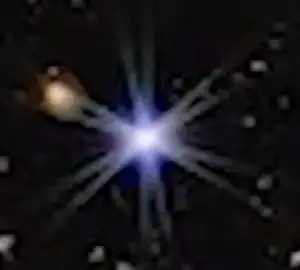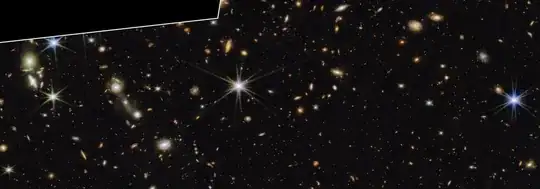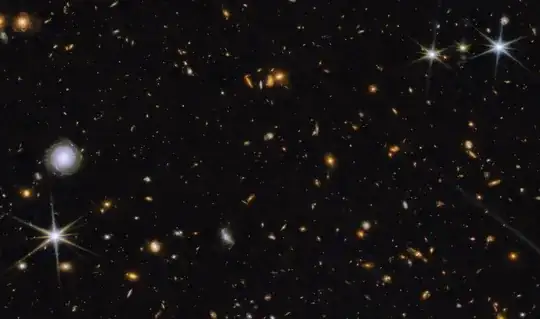CNN's February 24, 2023 Astrophysicist says 'there is nothing wrong with not knowing' is basically an opportunity for Neil deGrasse Tyson to give us a pep talk and reminder about the exciting process of science.
In the beginning there is a JWST photo where bright unresolved objects (foreground stars?) show JWST's classic six-plus-two diffraction spikes.
- this answer to Why does the alignment evaluation image from JWST look like this?
- this answer to Why not use only one support vane for the secondary mirror, to avoid multiple diffraction spikes?
- this answer to Why are larger hex mirrors round and the smaller aren't?
But one of them (slightly bluish in the false color image) has two copies, with a rotation angle of roughly 13° between them.
At first I thought maybe exposures at different wavelengths for this false color image were done at different times with different spacecraft attitudes (because of the way JWST works it will point in a given direction with different axial rotations depending on what the sunshield has to do) but I noticed that, at least to me:
- there's another object (showing as yellow-ish in the false color image) of what looks like similar brightness nearby with only one set of six-plus-two diffraction spikes
- the two pair of diffraction spikes on the blueish object in question look to be the same color (so not coming from different wavelength exposures).
So now I'm thinking multiple, overlapping exposure fields such that the object on the left was exposed at a different time than the one on the right? I can't figure it out.
Question: Why does one object (star?) in this JWST image have two sets of six+plus+two diffraction spikes but another, similar object nearby have only one?




